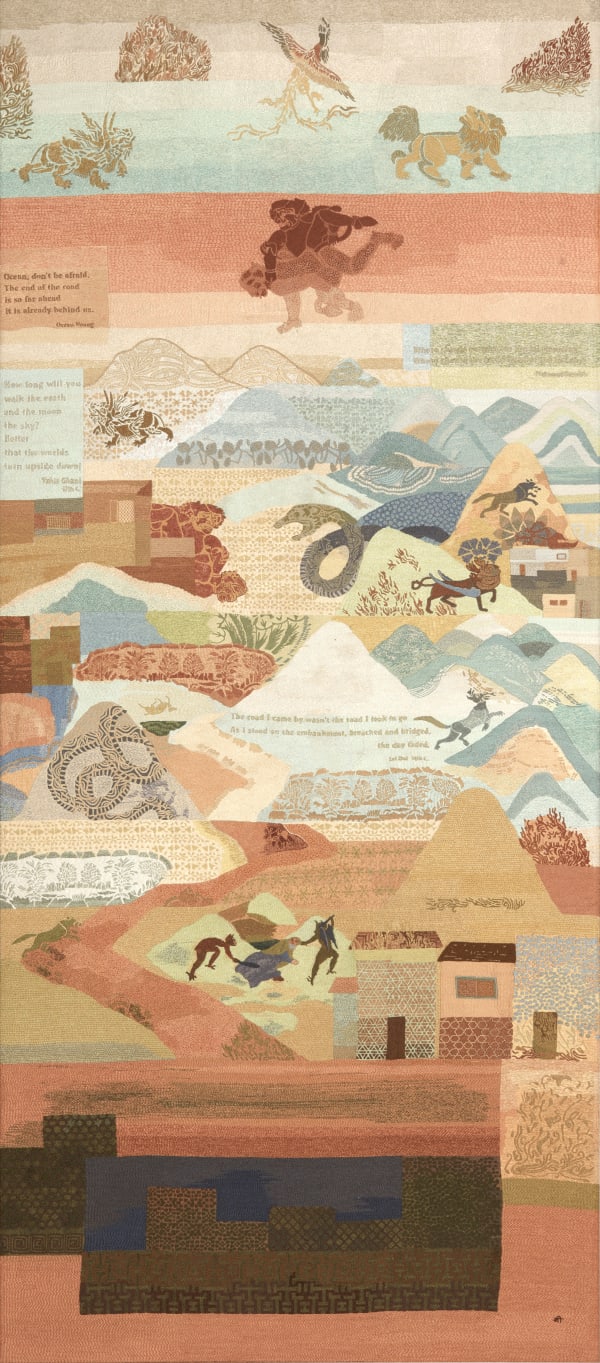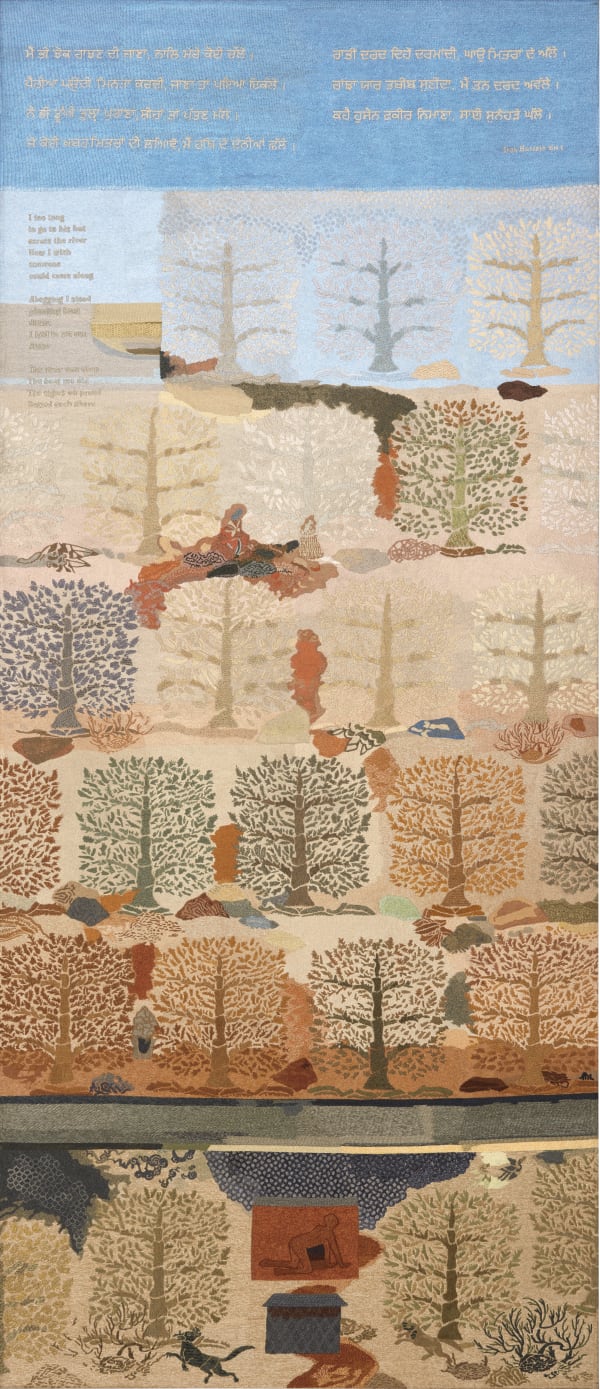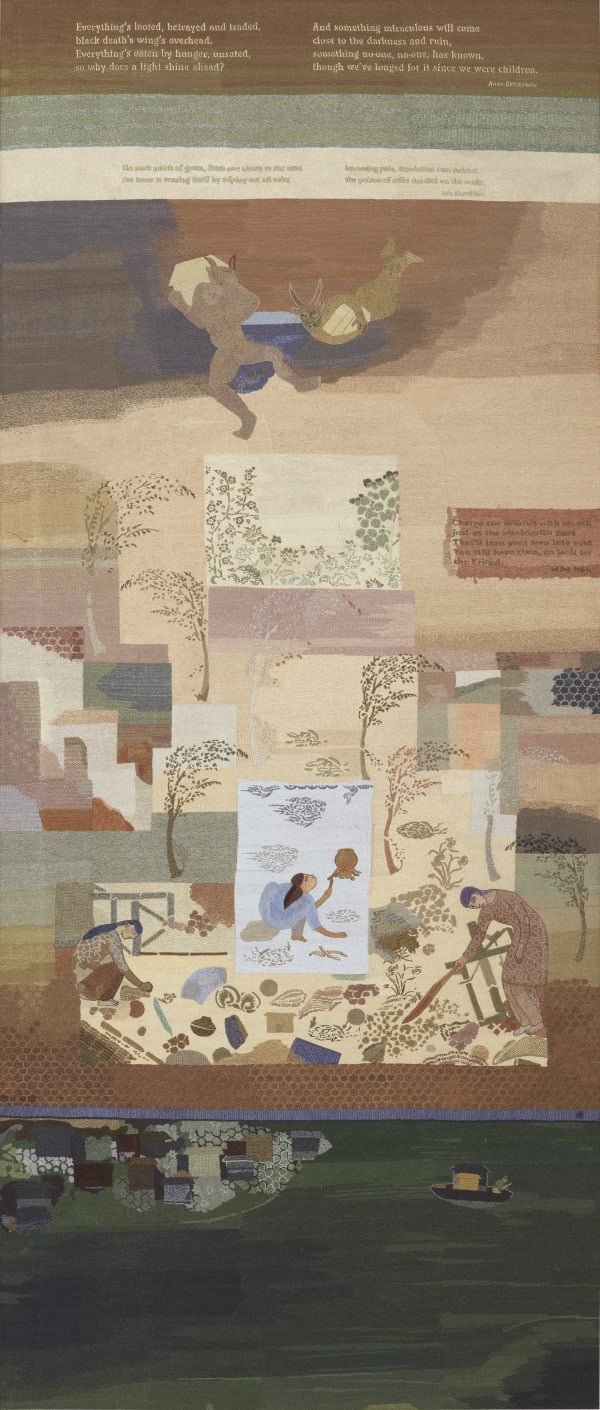Nilima Sheikh (b. 1945, New Delhi) is a luminary in the realm of contemporary Indian art, recognized for her distinctive integration of miniature painting techniques with larger installations. Her works are deeply rooted in the landscapes, cultural traditions, and historical narratives of South Asia, including Kashmir. Drawing inspiration from folklore, poetry, and historical texts, Sheikh’s art invites reflection on themes such as migration, memory, love, and resilience, often interwoven with an acute sensitivity to the natural world. Her style is poetic, meditative, and multi-layered, blending intricate details with larger societal narratives.
Through the "Terrain: Carrying Across, Leaving Behind" series, Sheikh employs scrolls as her canvas to evoke a sense of timeless storytelling. Her works embody a painterly delicacy that resonates with traditional forms while being profoundly contemporary in their socio-political commentary.
Nilima Sheikh’s art is a symphony of traditional and contemporary influences. Her works often reference historical styles such as Persian miniatures and Chinese scrolls while maintaining a deeply personal and political resonance. Themes of migration, memory, love, and environmental vulnerability are central to her practice. The use of muted palettes, delicate lines, and intricate details creates a sense of intimacy, inviting viewers into a contemplative space.
Sheikh's collaborative exploration of embroidery as a medium extends her artistic narrative, translating the subtleties of her brushwork into tactile forms. This intersection of painting and textile art underscores her commitment to preserving and innovating traditional South Asian craftsmanship.
-

Across Land- 83.8 x 34.2 in, 2016 (Embroidered)
-
 Heer 2- 83.8 x 34.2 in, 2016 (Embroidered)
Heer 2- 83.8 x 34.2 in, 2016 (Embroidered) -

Terrain Afterwards- 83.8 x 34.2 in, 2016 (Embroidered)







